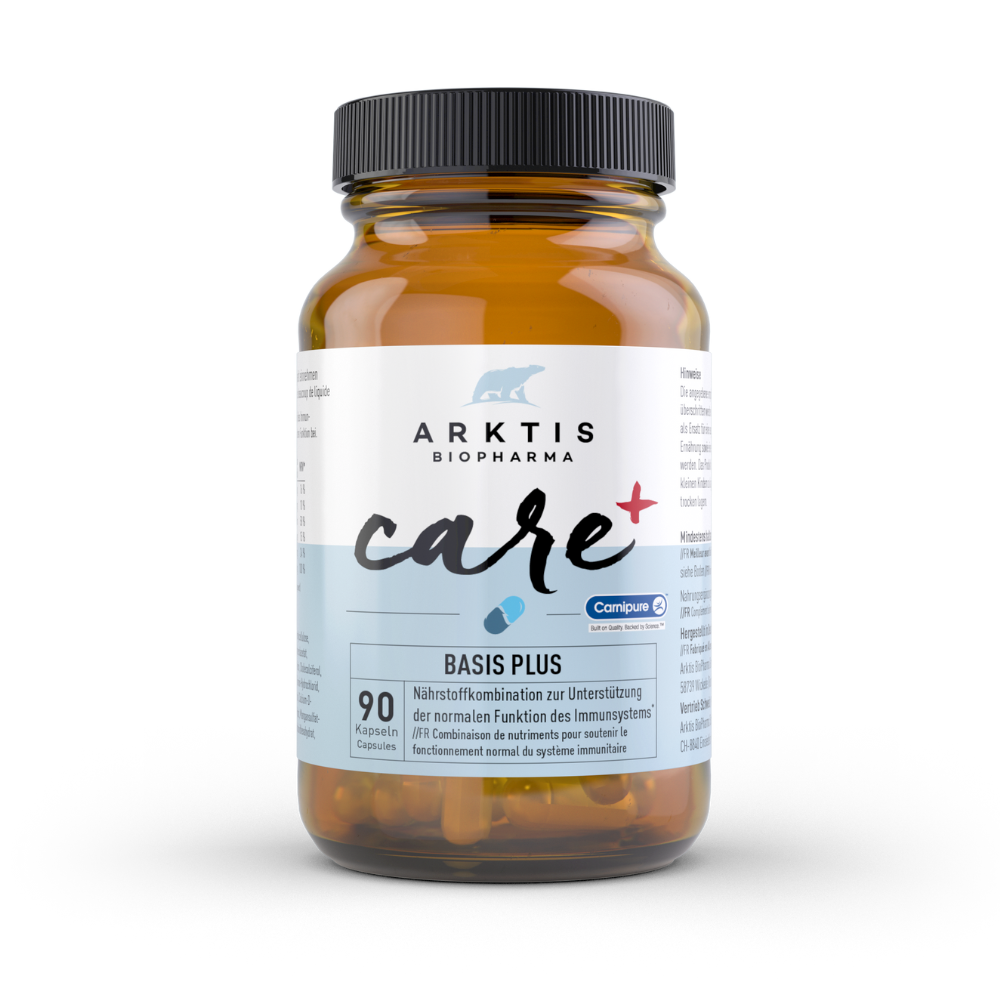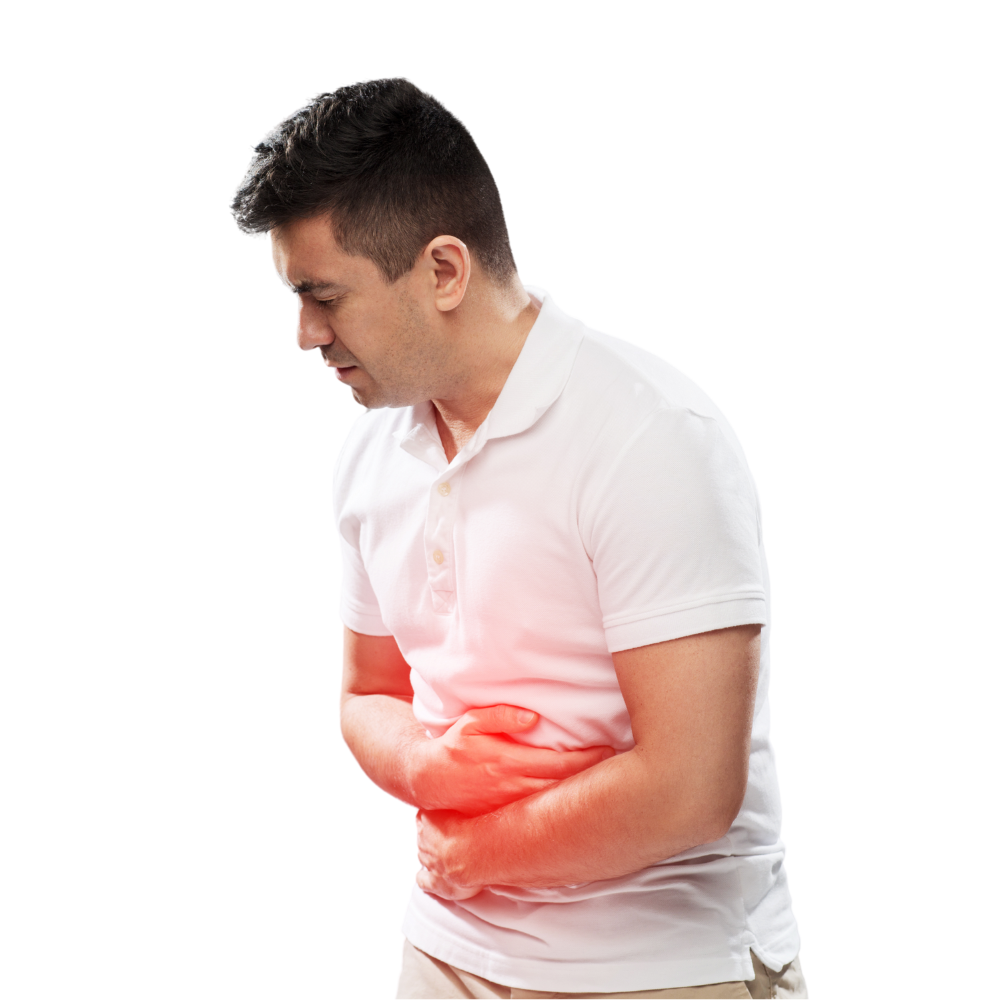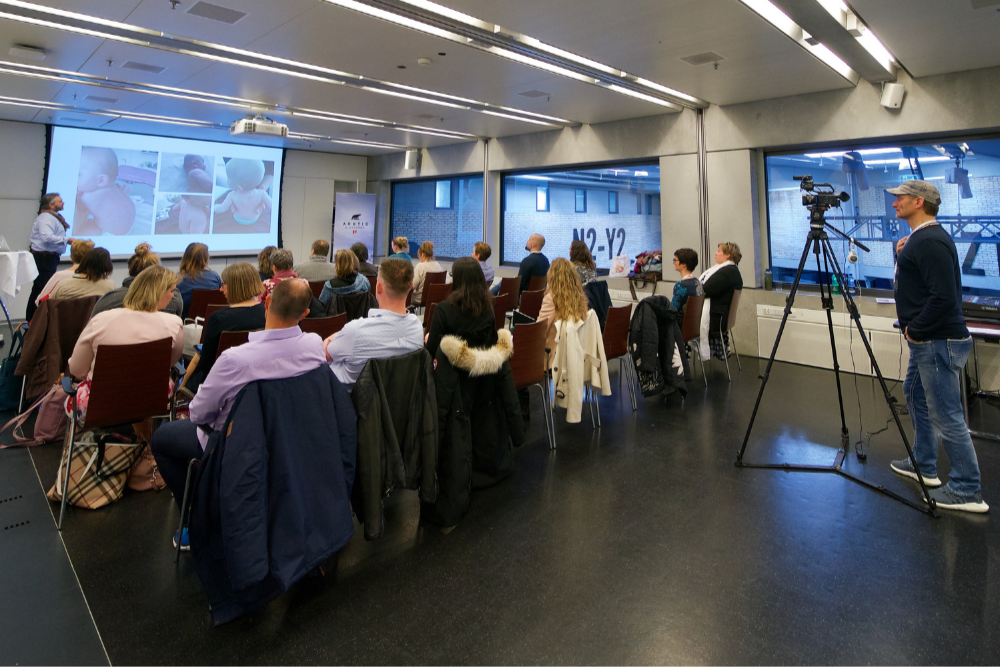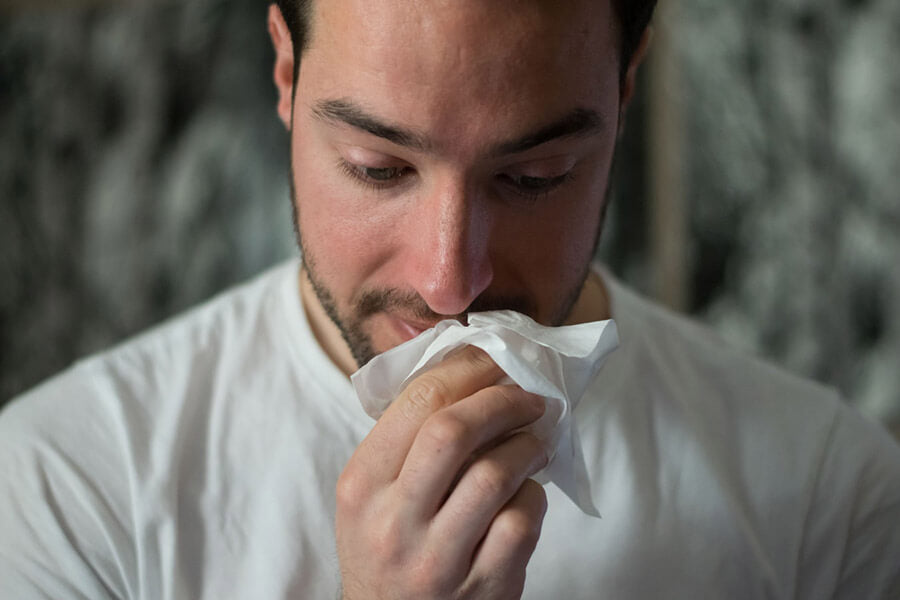Claudia: Now in spring, many people complain about hay fever: sneezing, sniffles, itchy, swollen eyes ... But what exactly is "hay fever"?
Milena: The medical term for what is commonly known as "hay fever" is "pollen-related allergic rhinitis". We actually react to pollen, not hay. For many allergy sufferers, the season starts very early in the year. Those who suffer from hay fever in spring are usually allergic to tree pollen, while those who get it later in spring and summer react to grass and weeds. Of course, one does not exclude the other, so the season can be very long for some. However, anyone who has hay fever symptoms all year round is most likely allergic to something else, such as house dust mites, animal dander or mold. You can have this tested.
Claudia: What actually happens in the body when you have hay fever?
Milena: An allergic reaction occurs when an allergen - such as pollen - is inhaled by someone who is allergic to that particular allergen. It then settles on the mucous membranes and triggers an inappropriate reaction from the immune system. The immune system produces antibodies - immunoglobulin E - which attach to specialized white blood cells - namely mast cells and basophils - which then release histamine and other inflammatory mediators. It is these substances that then trigger the symptoms you described at the beginning.
Claudia: What can you do to treat hay fever?
Milena: First of all, allergy sufferers are advised to avoid what they are allergic to as much as possible, but in the case of pollen that is easier said than done. After all, pollen is very small and light and flies around everywhere in spring and summer. Pollen can fly for miles, which is why on some days the media even issue warnings about heavy pollen counts. You should then keep doors and windows closed and stay indoors if possible, which is neither desirable nor practical in spring and summer.
Then there is the advice to apply Vaseline around the nostrils so that pollen sticks to it and doesn't reach the nasal mucosa in the first place. Of course, this does not prevent it from entering through the eyes. It is also recommended to change your clothes when you come into the house from outside and to take a shower in the evening to wash pollen off your skin and hair, to fit a pollen filter for the car ventilation and a HEPA filter in your vacuum cleaner.
Claudia: Is there also a medical treatment?
Milena: Yes, there is. One treatment method that has been around for over 100 years is "allergen-specific immunotherapy". This involves injecting a small amount of the allergen into the patient's body either via injections or a tablet that dissolves under the tongue. This has to be done several times until the body no longer reacts. However, it takes a long time to get to this point. Such treatment can take 3 to 5 years. Although it is very successful, it is not used very often. This may be due to the fact that you have to stick with it until the treatment takes effect.
Most hay fever allergy sufferers simply buy an anti-histamine, which is available over the counter and for little money in the pharmacy. In the past, these Medication very tired. With modern tablets, this is no longer the case for most people. Of course, anti-histamines only combat symptoms and do nothing to change the cause. Without tablets, hay fever will return. But there are also patients for whom anti-histamines don't work.
Claudia: Does hay fever always start in childhood?
Milena: No. Adults can also suddenly develop hay fever, even if they previously had no problem with pollen. You usually have it for the rest of your life without treatment.
[caption id="attachment_12860" align="aligncenter" width="900"] Source: Unsplash[/caption]
Source: Unsplash[/caption]
Claudia: Hay fever is very widespread. Has it always been like that?
Milena: Pollen is not actually a harmful substance. It's a completely normal substance that occurs in nature and is vital for us all so that plants can grow. There have certainly always been one or two allergy sufferers, but the number is increasing.
Claudia: Why is that?
Milena: We don't know exactly. There are various theories.
Some experts say it is due to increasing environmental pollution and climate change. There is a correlation between ever-increasing urbanization, exhaust emissions and the Western lifestyle. It is interesting to note that hay fever is more common in cities than in the countryside, even though there are many more plants - and therefore more pollen - there. With this theory, it is important to realize that correlation cannot prove causation. Just because two things - for example, more air pollution and more allergies - increase to the same extent does not mean that one causes the other.
Another theory - to which the lower incidence in rural areas also fits - is the hygiene hypothesis. According to this theory, it could be because our Western society is "too clean" and we are not exposed to enough microbes, particularly as children, especially in the first three years of life when our microbiome is forming. Our good bacteria train our immune system so that it can differentiate between "harmless" and "dangerous". A poorly developed immune system cannot do this and makes mistakes, causing it to overreact to a substance that is actually harmless.
Studies show that children who grow up on farms - where they come into contact with animals from an early age - suffer less from hay fever and other allergies and that this protection even lasts a lifetime. According to the hygiene hypothesis, this is because they are exposed to more microbes and the toxins they produce, called endotoxins. This is how the immune system learns to deal with them at an early age.
Claudia: Does that mean that even allergies have something to do with the gut?
Milena: If the hygiene hypothesis is correct, yes. Research into the human microbiome - all the microbes that live on and in us - is still in its infancy. However, it is known that the intestinal flora in particular is very important for the development of the immune system. Factors play a role in the development of intestinal flora The child's diet, illnesses, medication - especially antibiotics -, individual constitution, travel and the environment all play a role. This applies not only to the child, but also to the parents - especially, but not only, the mother. The type of birth - natural birth or caesarean section - and whether the child is breastfed or not also have an effect on the microbiome.
Antibiotics have a particularly damaging effect on the intestinal flora. Of course, they are sometimes unavoidable, but it is suspected that antibiotics administered before the intestinal flora is fully formed have an effect on immunity later in life and promote allergies.
Claudia: Are there any other theories?
Milena: It seems that vitamin D has something to do with it. There has been a lot of research into vitamin D in the recent past. It's the only vitamin that we produce ourselves in our bodies, namely in our skin. However, the sun has to shine on it for this to happen. There is still a lot of research to be done here too, but it is clear that an astonishing number of cells - virtually all types of body cells - have vitamin D receptors. This suggests that all cells also need vitamin D, albeit perhaps for different purposes.
We know that vitamin D deficiency is particularly widespread here in the northern hemisphere. One reason for this is that the sun shines less here, especially in winter. When it does shine, we apply sunscreen, which also blocks vitamin D production in the skin.
Just last fall, three different studies were published, all of which found that vitamin D supplementation reduces hay fever symptoms in people with low vitamin D levels.
Claudia: How do I know if my vitamin D level is too low?
Milena: You can have this determined by a blood test.
Claudia: Is there anything I can do if I already have hay fever? Can a certain diet help?
Milena: Yes, definitely. As with all processes in the body, the immune response also needs certain chemicals in order to function properly. If they're not there, it can't work at all. Of course, there are foods that provide these chemicals and others that deprive the body of these substances because it then has its hands full with detoxification, for example. Vitamins, minerals and phytochemicals are practically burned up in the process.
Claudia: So that means avoiding processed foods and eating wholesome, natural foods instead?
Milena: Exactly. That's always a good idea and would be a good start. So instead of buying ready-made meals or junk food, your shopping list should include things like vegetables, meat, fish, seafood, eggs, nuts, seeds, pulses, herbs, spices and fruit. Unprocessed, real food that you can then prepare at home. That's a good place to start.
Claudia: What about sugar?
Milena: Sugar raises blood sugar levels quickly and high. Then insulin has to be are released in order to lower it again. Both sugar and insulin are pro-inflammatory independently of each other. That's the last thing you want if you suffer from allergies.
Claudia: How much fruit and vegetables should I eat then? Five portions a day, you always hear ...
Milena: As I said, the intestinal flora plays a special role in our immune system. There is still a lot of research to be done, but we already know that biodiversity in the gut is desirable. The healthiest people have the most different types of microbes.
Probiotic supplements are great for restoring the gut flora if it is damaged, but they are only passing through. In the meantime, they improve the environment - the "room climate", so to speak - so that our own microbes can feel comfortable and multiply there again.
But what they really need for this is fiber - as we find it in vegetables, for example, but also in other plants such as fruit, nuts, seeds and whole grains. Different types of bacteria have different favorite foods. If we want to achieve biodiversity, we need to provide fiber from many different plants, especially vegetables. In my opinion, the "five portions a day rule" does not go far enough. I would rather say 7 to 12 portions of vegetables would be good.
Claudia:...and fruit.
Milena: Well, although "fruit and vegetables" are always mentioned in the same breath, they are not the same thing. Sure, fruit also provides fiber. But also a lot of sugar. Unfortunately, the recommendation to eat five portions of fruit and vegetables a day makes no difference, so people naturally think the two are interchangeable. But that's not the case. I would limit fruit to no more than two portions a day.
Claudia: You just said that probiotics improve the environment. Can fermented foods do the same? Things like sauerkraut, kimchi, kefir, yogurt and so on?
Milena: Yes, they are definitely great for the intestinal flora because they contain lactic acid bacteria. However, you have to make sure that they are of raw food quality, i.e. that they have not been heated. That would kill the bacteria.
Claudia: Are there certain types of vegetables that are recommended for allergy sufferers?
Milena: There is a secondary plant substance, a flavonoid, which is very helpful for allergies: quercetin. It has several functions, including blocking the release of histamine from mast cells. Fortunately, it is not difficult to find and can be found in many foods, such as onions, broccoli, apples, grapes, berries, citrus fruits, black and green tea and even capers.
Claudia: Are there any food supplements that would be helpful for allergies?
Milena: Definitely, and we've put together the best ones in our hay fever bundle.
We've already mentioned probiotics. ARKTIBIOTIC PREMIUM contains exactly the lactic acid bacteria we need to improve the intestinal environment so that the good bacteria feel at home again. A study from 2017 showed that a bifidobacteria mixture improved the symptoms and quality of life of children suffering from allergic rhinitis. It can also be used for children from the age of two. This is particularly good to know if antibiotic treatment has been necessary.
We recommend our VITA D3 Liquid for this purpose. As I said, very recent studies have shown that it relieves hay fever symptoms in people with vitamin D deficiency, and deficiency is not uncommon in our part of the world. One of the many functions of vitamin D is to modulate the immune cells of both the innate and the acquired immune system.
Then we also added GLUTAMINE. L-glutamine is an amino acid that serves as food for intestinal cells and is therefore very important for intestinal health. Immune cells also need glutamine. Glutamine can be produced naturally in the body. In fact, it is the most abundant amino acid in the blood and other bodily fluids, but there are times when our glutamine needs are greater than our ability to produce glutamine. As it is needed for both a healthy gut and a smoothly functioning immune system, we have included it.
Our Colostrum STRONG is also great for the immune system. Colostrum is the first milk produced by humans, cows and other mammals before the actual mother's milk flows. Colostrum is packed with nutrients and antibodies, i.e. proteins that fight infections. This strengthens the newborn right after birth, but studies have shown that it can also boost the immune system and improve gut health in adults.
These are the most important supplements that we would recommend to allergy sufferers, and we have also put them together in our hay fever bundle.
Claudia: That's great. And where can I get it?
Milena: You can order it online in our store at www.arktisbiopharma.ch.
Claudia: Thank you very much for this interview.
- Eriksson J, Ekerljung L, Lötvall J, et al (2010): Growing up on a farm leads to lifelong protection against allergic rhinitis. Allergy. 2010 Nov;65(11):1397-403.
- Agarwal S, Singh SN, Kumar R, Sehra R (2019): Vitamin D: A Modulator of Allergic Rhinitis. Indian J Otolaryngol Head Neck Surg. 2019 Nov;71(Suppl 3):2225-2230.
- Bakhshaee Milena, Sharifian Milena, Esmatinia F, et al (2019): Therapeutic effect of vitamin D supplementation on allergic rhinitis. Eur Arch Otorhinolaryngol. 2019 Oct;276(10):2797-2801.
- ÇobanK, Öz I, Topçu Dİ, Aydın E (2019): The Impact of Serum 25-Hydroxyvitamin D3 Levels on Allergic Rhinitis. Ear Nose Throat J. 2019 Sep 30:145561319874310.
- Bischoff SC (2008): Quercetin: potentials in the prevention and therapy of disease. Curr Opin Clin Nutr Metab Care. 2008 Nov;11(6):733-40.
- Mlcek J, Jurikova T, Skrovankova S, Sochor J (2016): Quercetin and Its Anti-Allergic Immune Response. Molecules. 2016 May 12;21(5).
- Miraglia Del Giudice Milena, Indolfi Claudia, Capasso Milena, et al (2017): Bifidobacterium mixture (Blongum BB536, B infantis Milena-63, B breve Milena-16V) treatment in children withseasonal allergic rhinitis and intermittent asthma. Ital J Pediatr 2017; 43:25.
















